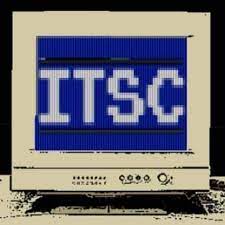
 One of the most challenging aspects of cybersecurity readiness is establishing robust threat detection capabilities. Cyberattacks are constantly evolving, and criminals are now leveraging tools such as artificial intelligence (AI), third-party attack development tools, and in-depth research on their targets to ensure success. Staying up to date on adversary tactics, techniques, and procedures (TTPs) and helping users detect in-progress attacks and understand how to spot the signs of phishing emails can be a daunting task. It’s only going to get harder, as Forrester predicts cybercrime costs could climb to as much as $12 trillion in 2025. For managed service providers (MSPs), protecting multiple customers from increasingly complex attacks across a wide array of vectors can be even more difficult. The answer to proactive threat detection and response lies in AI-powered threat detection.
One of the most challenging aspects of cybersecurity readiness is establishing robust threat detection capabilities. Cyberattacks are constantly evolving, and criminals are now leveraging tools such as artificial intelligence (AI), third-party attack development tools, and in-depth research on their targets to ensure success. Staying up to date on adversary tactics, techniques, and procedures (TTPs) and helping users detect in-progress attacks and understand how to spot the signs of phishing emails can be a daunting task. It’s only going to get harder, as Forrester predicts cybercrime costs could climb to as much as $12 trillion in 2025. For managed service providers (MSPs), protecting multiple customers from increasingly complex attacks across a wide array of vectors can be even more difficult. The answer to proactive threat detection and response lies in AI-powered threat detection.
24/7 vigilance: AI’s uhttps://smartermsp.com/navigating-ai-the-dos-and-donts-for-msps/nblinking eye on your network
AI-driven tools enable 24/7 surveillance of customer networks, analyzing vast amounts of data in real time to detect patterns and anomalies that may indicate potential threats. This continuous monitoring allows MSPs to identify suspicious activities, such as unusual login attempts or unexpected spikes in network traffic, even during off-hours.
Unlike traditional rules-based solutions that require manual updates to remain current, AI-based systems can learn and adapt in real-time, which helps MSPs protect their customers’ networks from emerging threats.
Forecast cyberattacks with predictive analytics
By utilizing AI’s ability to analyze historical data and current threat patterns, MSPs can anticipate and predict future vulnerabilities and attack vectors. This predictive capability enables preemptive actions, thereby reducing the likelihood of incidents and minimizing customer risk.
These solutions can, for example, monitor things like increased network traffic or unusual login attempts to alert MSPs and their customers about potential threats. Because the MSP can respond to the threat before a breach occurs or contain a breach before it spreads, AI can also reduce costs related to emergency incident response (and resultant data or service restoration services) and avoid costly downtime and reputational damage for the customer.
AI’s ability to spot hidden threats
Advanced machine learning algorithms can recognize deviations in behavior across multiple customer environments, flagging risks in real time. AI systems learn what “normal” looks like within a network and can identify subtle anomalies that might signal an attack, such as a device communicating with an unfamiliar IP address.
For MSPs, analyzing typical customer network traffic patterns allows for better threat detection, making it easier for them to offer tailored protection across a diverse customer base where normal network activity can vary greatly among industries.
Autonomous defense: AI’s self-healing capabilities against breaches
When threats are detected, AI can automatically initiate containment measures, such as isolating compromised devices, quarantining phishing emails, or blocking malicious network traffic. This rapid response capability minimizes potential damage and maintains customer trust.
Fast, automated responses are critical, as compromised accounts or networks can enable an attack to quickly spread across an entire network (or linked networks – MSPs sometimes serve as an attack vector, providing access to multiple customers through a single breach). AI-based solutions can isolate or quarantine suspicious devices and emails or block network traffic. Security teams also benefit from rapid AI analysis of perceived threats, and automated workflows can quickly route alerts and other information to the correct stakeholders.
Security that grows with you – and without limits
Advanced automation and intelligent threat detection enable MSPs to monitor and protect a growing number of customers without increasing their teams or compromising service quality. This scalability enables them to grow their businesses while maintaining robust cybersecurity defenses.
By automating routine security tasks such as activity monitoring, alert management, and policy updates, MSPs can significantly reduce manual effort. Centralized and automated threat detection also reduces the number of disparate software tools needed to monitor customer systems, and alerts generated in one customer network can help the MSP prepare for potential threats across their entire customer base.
With these innovations in AI, MSPs can provide a higher level of proactive defense, ensuring customers stay protected against the ever-evolving threat landscape while differentiating themselves in a competitive market. By partnering with the right vendors, they can also expand their businesses in a more financially sustainable and efficient way while improving their security performance with existing customers.
This article was originally published at Managed Services Journal.
Photo: alphaspirit.it / Shutterstock
This post originally appeared on Smarter MSP.

